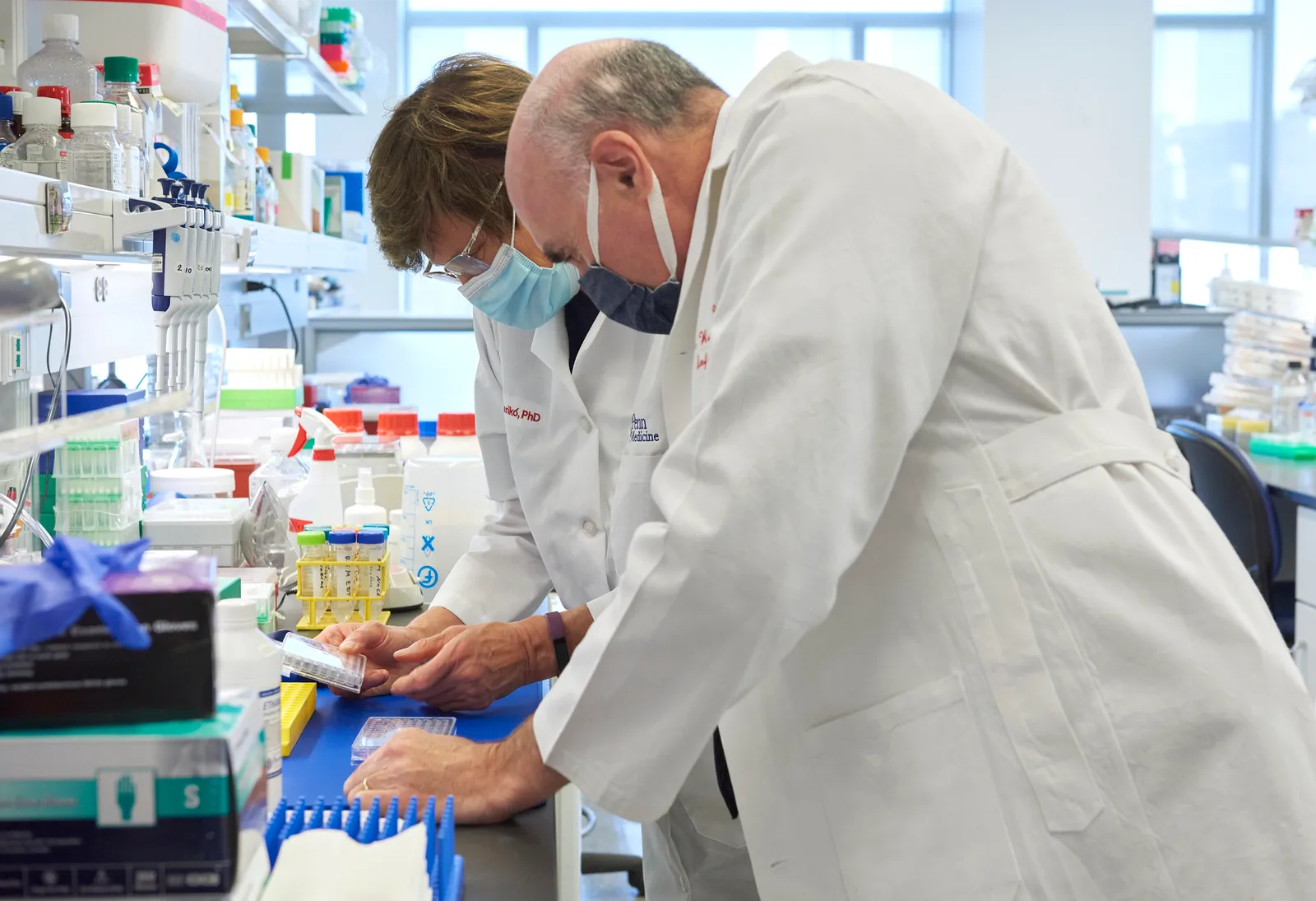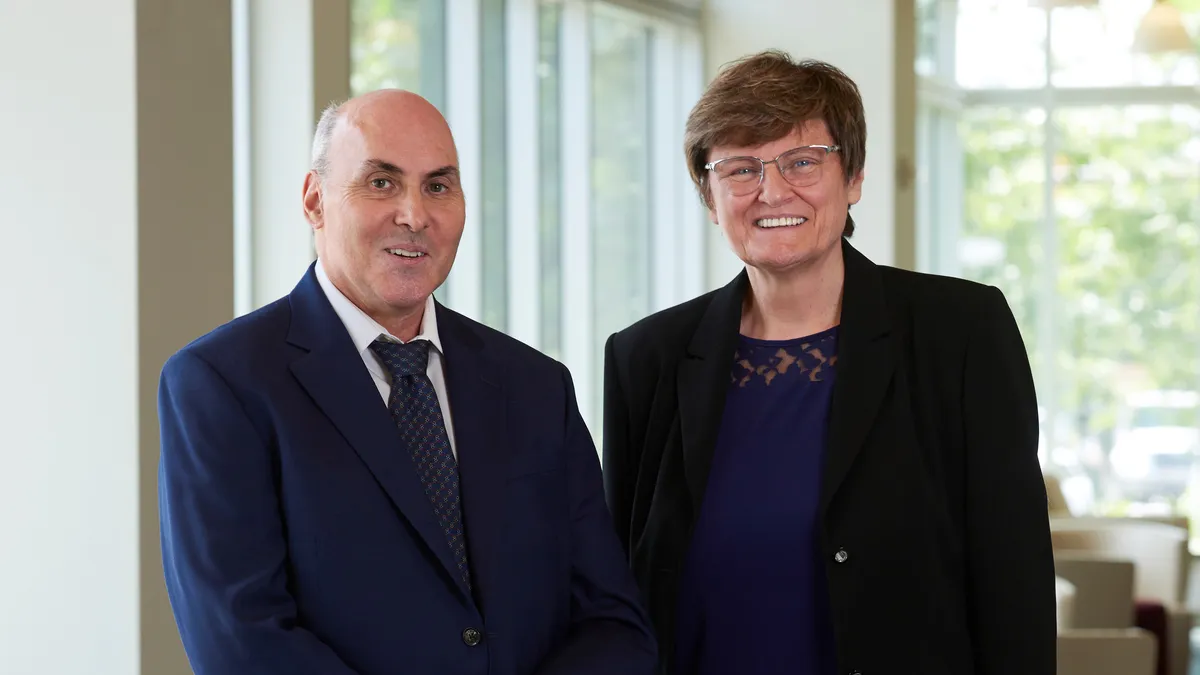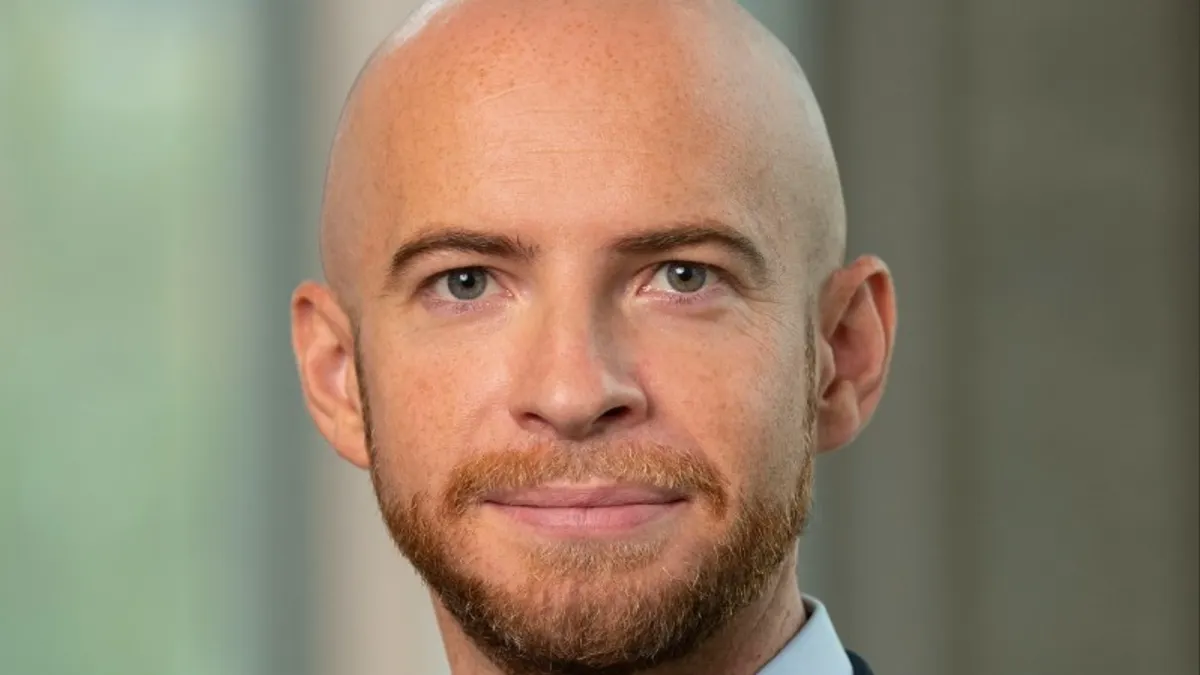Long before the COVID-19 pandemic, Katalin Karikó and Drew Weissman worked tirelessly for decades to bring a little-known idea to the pharma world. That idea became the basis of the mRNA vaccines that have since propelled the Penn Medicine researchers to a rock star status among scientists.
At the height of the pandemic with no approved vaccines, mRNA technology allowed inoculations to travel quickly to the market from the likes of Pfizer-BioNTech and Moderna. But it was Karikó and Weissman who toiled at the lab bench for years in the 1990s and early 2000s to bring the discovery of mRNA’s promise to bear. And although the meteoric rise of mRNA has brought riches to their Big Pharma peers, Karikó and Weissman’s journey with the breakthrough technology was much less glamorous.

Originally from Hungary, Karikó spent years working alongside Weissman on a mission to make mRNA a viable technology. Other researchers had effectively delivered mRNA into mice, but no one could make it work safely in humans. And where Karikó and Weissman saw promise, others saw a dead end.
The setbacks were frequent. In 1995, Karikó was demoted at Penn, which stole her chances of becoming a full professor. Grant rejections were piling up. And at one point early on, Karikó even had to sell her car on the black market to make ends meet.
The turning point came in the early 2000s when they discovered a key to turning fragile mRNA strands into viable vaccines and medicines by packaging them into lipid nanoparticles (LNPs) that would deliver them to the right place in the body.
After publishing and patenting their work in 2005, the two established a company called RNARx a year later. But the hurdles for the pair weren’t over. Due to intellectual property disputes with the University of Pennsylvania, their work was licensed to another company called CellScript before it eventually wound up in the hands of BioNTech and Moderna.
"Of course, it didn’t work for us, because eventually we didn’t get the patent for our company. But if we did, probably there would be no Moderna."

Katalin Karikó
BioNTech Senior Vice President
As Karikó’s and Weissman’s work took off at those companies — leading to massive investments and partnerships — grants for the two pioneers dried up. However, Karikó didn’t stray too far from the efforts to advance mRNA. In 2013, she took a job as senior vice president at BioNTech, and has stayed devoted to developing the tech for new uses including infectious diseases and cancer. While she has retired from Penn, Weissman remains at the school as a physician and scientist.
Despite once being cast aside by the scientific community, the pair have now become pharma legends, landing many healthcare recognitions such as the Lasker Award and Karikó’s inclusion in Time’s 2021 Most Influential People of the Year. They were even considered for the Nobel Prize in 2021.
Yet, even with the recent avalanche of accolades, Karikó and Weissman still approach the pharma world from a scientist’s vantage, recognizing the fight that researchers need to wage to have their work not only seen for its medical potential, but also to retain the rights to that work once profits start rolling in.
PharmaVoice was able to talk briefly with Karikó and Weissman as they accepted the 2022 Ross Prize in Molecular Medicine from the Feinstein Institutes for Medical Research in New York. Here they talk about their past experiences getting their work off the ground, the changes the industry has seen and what might be next for the mRNA technology they helped bring to the world.
This interview has been edited for length and clarity.
What in your experience can executives do better to bring cutting edge science to the people who need it?
Katalin Karikó: I think they are doing it right now, because they are trying to see what is available and they are giving out grants for the smaller companies — if they find something interesting, they are merging, buying up whatever is interesting because most of the research is now in those small companies
Drew Weissman: Going from academics, pharma is interested in late stage — they don’t fund early stage. It’s the small biotech companies that fund the early stage, bring it to a later stage and then they go to pharmaceuticals. So there isn’t an interest for pharmaceuticals in brand new basic science — they want to wait so they see it has a good chance of working.
On the other side, what can researchers do to gain the attention of decision makers when the science might not quite fit into current strategies?
Weissman: It’s the old real estate joke — publish, publish, publish. If your work is out and people are reading it, then that attracts the attention of biotechs and pharmaceuticals.
Karikó: What we have done with Drew, for example, when we had something novel and we could see that it has great potential, then you get the patent you need, establish a small company, like we have done, then apply for a business grant — just go step by step in this way. Of course, it didn’t work for us, because eventually we didn’t get the patent for our company. But if we did, probably there would be no Moderna and other things because we would develop things. But that’s what would be the normal way. If you bid your idea to another small company … they are pushing all of their ideas, and it is difficult to come in with your ideas.
Who did you turn to in the days when you knew the science was working, but it wasn’t being picked up by the entities who could make it real?
Karikó: We did not get help from the university to send to investors.
Weissman: We found and talked to VCs on our own.
Karikó: Even before Drew and I met, we went out and looked for investors. They promised $72 thousand — an unbelievable amount of money for me — and then finally they didn’t give it, and they didn’t even return the telephone call. It ended everything so badly and I was very disappointed, but what can I do?
A lot of scientists are out there doing the same thing now. How has the industry changed over the years?
Karikó: On the mRNA side, what I can say now [as an example] is we had this mRNA conference — and I was responsible [for giving] every small company a couple of minutes to ask what they need. There were like 300, 400 people around and they said they need formulation, they need RNA, they need a partner, they need the money — so everybody could collect information to start their own company. That’s what we have now.
Weissman: What I see that’s different now is just about every university, every medical school has research outlets, research labs to help people start new companies. Twenty years ago, that was rare. Now everybody has them. So universities are encouraging faculty to start companies based on their ideas. And I think that’s helping move things into the biosphere of new drugs and new developments.
If you could flip a switch, what would you want to see change in the pharma industry?
Karikó: I can see at a large pharma company like Pfizer and others, they are so important and so efficient and they are doing so many things very, very well. We need them to run clinical trials, to scale up, and at such a company everybody knows what to do. I was very impressed — I don’t know why people do not like large pharma because I have seen one working very well. Somebody has to make companies – we made our companies, but we didn’t get the money. I went to biotech with a list of what I wanted to do. Eight years later, we are not doing anything because it is not my company. It is [BioNTech CEO] Ugur [Sahin]’s company. I had to learn in six years, OK, that’s not my company, it is his company, and he is doing what he is interested in and believes, and I will do what I believe. And I would try to do things.
What are those things that you would like to be doing?
Karikó: I have a list of things that messenger RNA would be good for as therapeutic purposes, and those I learned during 24 years listening to lectures at UPenn. And some of them we even started with Drew, some mRNA experiments, and writing grants about some of these today.
Weissman: There’s enormous new technology coming out. People are making better and different LNPs and we figured out how to target the LNPs to particular cell types, tissues and organs. That now allows you to do gene therapy in vivo or to deliver therapeutics to particular organs and for specific diseases. That’s the beginning — it’s going to keep getting more interesting and more specific in the future.
Karikó: The formulation — I always see that this is the future we talk about.



















